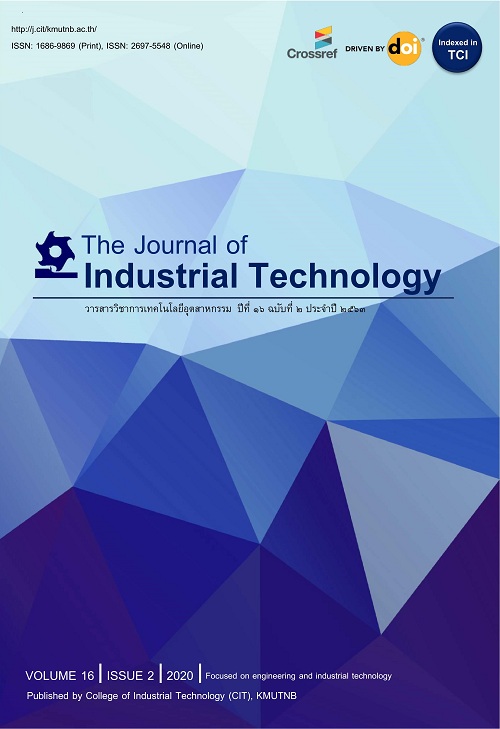การจัดการมูลฝอยจากตลาดสดและเศษวัสดุสีเขียวภายในมหาวิทยาลัยสงขลานครินทร์ วิทยาเขตปัตตานี
The Solid Waste Management from Fresh Market and Green Residues in Prince of Songkla University, Pattani Campus
Abstract
บทคัดย่อ
งานวิจัยนี้เป็นการจัดการมูลฝอยอินทรีย์เพื่อนำมาใช้ประโยชน์ใหม่ในรูปการหมุนเวียนธาตุอาหาร เพื่อศึกษาข้อมูลการจัดการมูลฝอยจากตลาดสดและภายในมหาวิทยาลัยสงขลานครินทร์ โดยศึกษาสมบัติทางกายภาพ และเคมี จากผลการศึกษาพบว่า ตลาดสดเทศบาลเมืองปัตตานีมีปริมาณมูลฝอยเฉลี่ย 2.00 ตันต่อวัน มีความหนาแน่น 0.70 กิโลกรัมต่อลูกบาศก์เมตร มีองค์ประกอบเรียงตามลำดับคือ เศษผัก ร้อยละ 53.78 เศษผลไม้ร้อยละ 19.56 และเศษกระดาษร้อยละ 15.33 มีความชื้นร้อยละ 86. 78 ภายในตลาดสดมีการคัดแยกมูลฝอยและนำไปเลี้ยงสัตว์ ได้แก่ เลี้ยงปลาดุก เป็ด และแพะ ส่วนเศษวัสดุสีเขียวภายในมหาวิทยาลัยเกิดจากกิจกรรมตัดหญ้า ตกแต่งกิ่งไม้ และการปรับภูมิทัศน์ มีปริมาณเฉลี่ย 300.00 กิโลกรัมต่อวัน มีแนวทางการจัดการ 3 แนวทางคือ การหมักทำปุ๋ย เทกองกลางแจ้ง และเลี้ยงสัตว์ ส่วนใหญ่ใช้วิธีการเทกองให้ย่อยสลายตามธรรมชาติ จึงต้องใช้เนื้อที่มาก ดังนั้น การนำเศษวัสดุอินทรีย์จากตลาดสดเทศบาลเมืองปัตตานีและภายในมหาวิทยาลัยสงขลานครินทร์ วิทยาเขตปัตตานีมาหมักร่วมกัน จึงเป็นแนวทางการจัดการมูลฝอยอินทรีย์และได้สารปรับปรุงคุณภาพดินที่เหมาะสมกับการเจริญเติบโตของพืชซึ่งปริมาณธาตุอาหารหลัก พบว่า มีค่าเกินค่ามาตรฐานปุ๋ยอินทรีย์ ได้แก่ ปริมาณไนโตรเจนร้อยละ 1.31 ฟอสฟอรัสร้อยละ 1.63 และโพแทสเซียมร้อยละ 0.56 ดังนั้นจึงสามารถนำมาเป็นสารปรับปรุงคุณภาพดินได้
Abstract
This research on the management of organic waste utilization into fertilizer alternation was conducted to study the management of solid waste from fresh markets and from Prince of Songkla University. The aim of this study was to analyze the physical and chemical properties of waste and residues. Findings revealed that, in Pattani Municipality fresh market, there was 2.00 tons of waste a day on average, with the density of 0.70 kilogram per cubic meter. The waste found included 1. vegetable residues (53.78%), 2. fruit residues (19.56%) and 3. paper residues (15.33%), retaining moisture of 86.78. It was also found that in the fresh market there was the waste sorting to feed animals including catfish, ducks, and goats. For the green residues on the University, they were from grass mowing, tree pruning, and landscape gardening. The average amount of the green residues is 300.00 kilograms per day. In terms of management, there were three approaches; fertilizer fermentation, waste dumping in the open space, and animals feeding. Mostly, waste dumping in the open space for natural decomposition consumed plenty of space, therefore the collecting of organic residues from two different sources to ferment together is a practical approach for organic waste management and soil fertilization production.
Keywords
Refbacks
- There are currently no refbacks.






